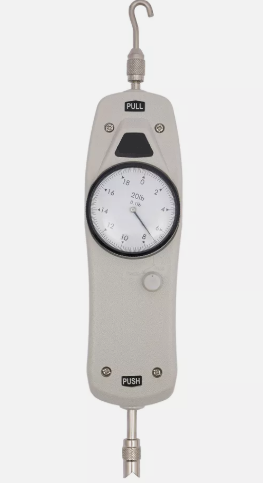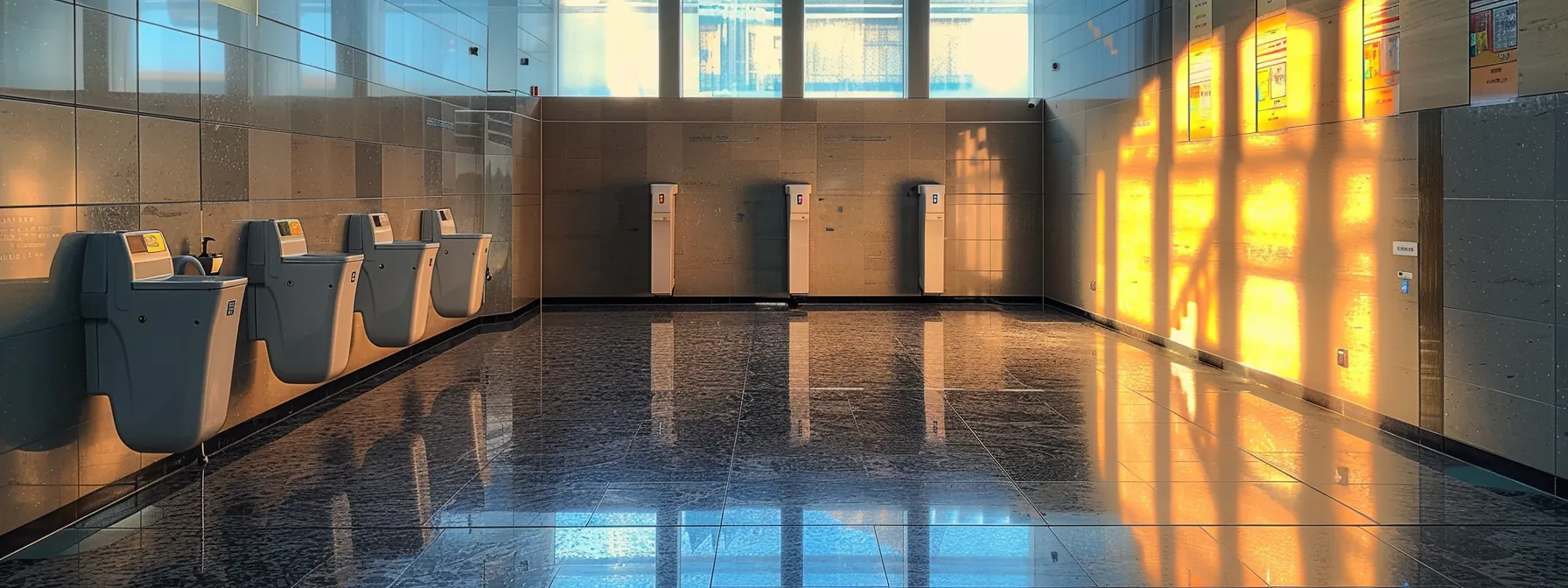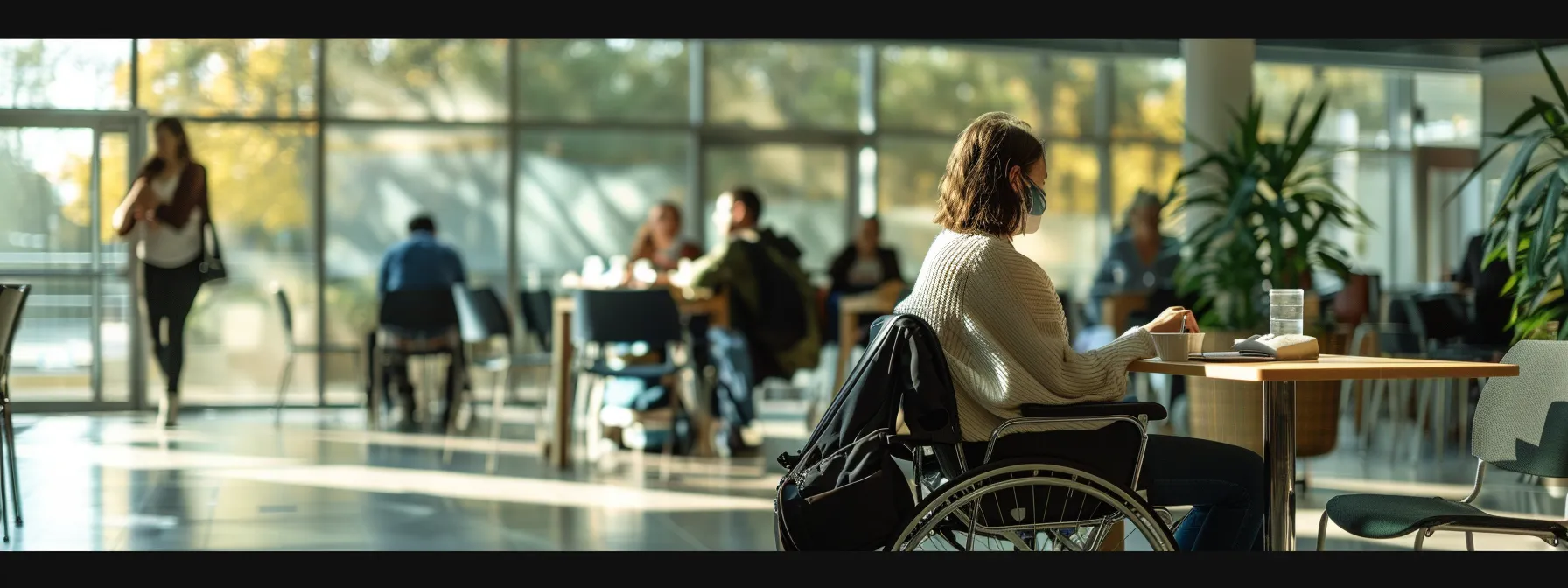
Navigating ADA bathroom requirements often leads to a litany of faqs, particularly concerning features like the positioning of a urinal or the height of grab bars. Ensuring usability not only encompasses the physical elements but also extends into the integration of responsive software that assists in emergency situations. Staying informed about design specifications is vital for compliance and user safety. In this article, readers will gain a comprehensive understanding of crafting ADA-compliant bathroom emergency call systems that meet legal standards and provide robust functionality. The insights shared here aim to serve as a roadmap for successful implementation and future innovation in the field.

Public facilities, including restrooms, must uphold ada bathroom requirements, including a percentage of spaces accessible to people with disabilities — this is a cornerstone principle of ADA compliance that extends to the design and implementation of emergency call systems within public toilets. These systems require a strategic synthesis of components, ensuring they are both discoverable and usable by all individuals, regardless of their physical capabilities. Proper placement away from potential impediments like stairs is critical, as is ensuring accessibility from within stalls and common areas within the restroom. Moreover, the inclusion of both audible sirens and visual signals, such as a flash alert, is necessary to accommodate users with varying sensory abilities. This is evident in spaces ranging from office buildings to lodging, underscoring the universal need for inclusive safety measures.
The United States Access Board, a federal agency committed to ensuring inclusive design in public spaces, has developed stringent guidelines for constructing compliant facilities, akin to the role of air traffic control in aviation safety. These regulations demand that emergency call systems in restrooms not only warn of hazards such as smoke but also adapt to the needs of all users, mandating specific height requirements for buttons and switches to be within reach for wheelchair users, as defined by the Americans with Disabilities Act Accessibility Guidelines (ADAAG).
An emergency call system’s design within the confines of compliance must consider a variety of factors to ensure effectiveness and accessibility. One aspect includes the assured clear egress within a restroom environment, akin to the unobstructed paths required for safely reeling in a catch in fishing. There must be no barriers that could hinder swift exit or access, similar to the ease with which a bedroom door should swing open in a residence or a vehicle should exit a garage. Additionally, these systems should provide clear and immediate communication for assistance, much like an alert signifying a need for help in the shower area of an accessible bathroom.
Ensuring the proper location and accessibility of emergency call systems in bathrooms requires meticulous attention to detail from landlords and their contractors. Signage must be prominently displayed and easily visible, guiding patients to the call system without a moment’s hesitation. The system itself should be positioned in a location that can be accessed without obstruction, serving as a beacon of safety for those in need.
To meet the diverse needs of individuals with disabilities, regulation necessitates that bathroom emergency call systems at facilities like inns and public buildings include features catering to both auditory and visual senses. An audible alarm must resound with clarity, ensuring that help is summoned with the same urgency and reliability as when a pump energizes a water system. Likewise, a corresponding visual alert—often a strobe light—must pierce through the ambient light to signal the presence of an emergency, guaranteeing attention is swiftly garnered.
Knowing the ADA requirements is just the beginning. Let’s move forward with crafting emergency call systems in restrooms that not only meet but exceed these standards.

Designing an emergency call system that adheres to the Americans with Disabilities Act (ADA) entails meticulous attention to how individuals with disabilities interact with their environment. This interaction often involves everyday fixtures such as plumbing fixtures, drinking fountains, and safety equipment like fire extinguishers. For restrooms, the design prerequisites extend beyond the primary functional items to include height and reach specifications that dictate the installation of call buttons within arm’s reach for all users, including those in wheelchairs. Adhering to standards set forth by the American Society of Mechanical Engineers, these guidelines ensure that anyone can swiftly engage the system without undue strain or movement. In addition, clear and accessible signage must lead users directly to these emergency systems, providing unmistakable indicators that assistance is readily available, mirroring the uncomplicated operation of a well-designed plumbing system.
In essence, designing unisex and health care facility restrooms demands the installation of alarm systems that comply with ADA guidelines, ensuring that all emergency communication devices are positioned at the necessary height and reach. This mandates the accessibility of alarm triggers at an appropriate level, allowing individuals in wheelchairs to activate them without assistance. The cost of implementing these systems is an investment in universal safety, and the language used in signage for these alarms must be clear and concise to promote immediate understanding and use.
Installation of emergency call buttons in bathrooms requires precision akin to the positioning of important computer hardware; each detail is instrumental for optimal operation. Buttons should feature braille for visually impaired individuals and be mounted at a height accessible from a wheelchair, ensuring immediate activation is possible from any angle within the bathroom.
| Component | Requirement | Application |
|---|---|---|
| Emergency Call Button | Braille Labeling | Assist Visually Impaired Users |
| Emergency Call Button Height | Wheelchair Accessible | Enable activation from seated position |
| Sport Facilities | Bathroom Location | Ensure availability in high-traffic areas |
Comprehensive signage, essential under building code regulations, serves as the navigational system, akin to water channel markers, leading individuals directly to the emergency call systems. Signifiers must be prominent and intelligible to all, just as clear instructions are crucial at the point of sale or an elevator directory. For health care provider venues, this clarity may be the difference between timely aid and critical delay.
The journey from concept to reality brings us to intricate blueprints and meticulous layouts. Let’s dive into the technical specifications that ensure these call systems meet every ADA guideline.

The technical specifications for ADA-compliant bathroom emergency call systems encompass a range of criteria aimed at ensuring that individuals with disabilities receive prompt and effective assistance in an emergency. Delving into the realm of signal types and responses means understanding the different ways in which users, including those with visual impairments, can alert for help; a system that is responsive whether within the confined space of a stall or the more open area of a lobby. In keeping with the definition of accessibility akin to a ‘curb cut‘ on a sidewalk, the design of these systems must also account for power backup and reliability so that in the event of electricity failure, akin to failure in fire safety systems, assistance remains a button-push away. Regular testing and maintenance protocols are just as vital, ensuring that these lifelines operate impeccably when they are most needed.
An ADA-compliant emergency call system’s signals must be discernible and actionable in order to be accessible to all individuals. Adhering strictly to the international building code requirements, these systems ensure a person with limited movement or sensory capabilities can alert others with the same ease as a truck driver signals with the flash of hazard lights. Each actuation of the system generates a unique identifier, enabling quick and precise response, an essential lifeline akin to a lease agreement that provides security and confidence.
| System Feature | ADA Requirement | Function |
|---|---|---|
| Audio Signals | Volume Adjustable | Alert audibly in variable environments |
| Visual Indicators | Strobe or Flashing Lights | Signal visibly for those with hearing impairments |
| Unique Identifier | Number System | Facilitate fast, accurate response |
Robust power backup and reliability standards are non-negotiable for ADA-compliant bathroom emergency call systems, particularly in high-stakes environments where the presence of a portable toilet signals the necessity for standalone facilities that mirror the permanence of built-in structures. This extends to features such as sinks and handrails, which must be operational even during power outages. A nominal fee, when compared to the potential cost of non-compliance, underwrites the assurance that these critical systems will perform under all conditions.
| ADA Compliant Feature | Backup Requirement | Reliability Standard |
|---|---|---|
| Emergency Call System | Battery Power Reserve | 24/7 Operational Capability |
| Portable Toilet | Independent Energy Source | Consistent Performance |
| Sink and Handrail Accessibility | Uninterruptible Power Supply (UPS) | Maintenance and Testing Protocols |
Regular testing and maintenance of emergency call systems in restrooms are more than just best practices; they are preventative measures against potential lawsuits. Facility managers must ensure that testing protocols are in place so that every dwelling, whether a modest abode or a towering complex, meets accessibility standards. Just as a damaged pier can impede the function of the waterfront, or a cracked sidewalk can deter pedestrian access, a neglected emergency system can fail precisely when its prompt functioning is most critical.
Transitioning from the intricacies of ensuring ADA-compliant call systems, firms must also consider the potential legal challenges they face if they disregard these standards. Failing to adhere to ADA guidelines not only affects inclusivity but also exposes businesses to significant legal risks.

Steering clear of ADA compliance violations requires more than the initial splash of installing an emergency call system; it demands ongoing diligence akin to maintaining a sturdy vessel for enduring voyages. Case studies spotlighting penalties for non-compliance serve as cautionary tales for organizations, illustrating the repercussions akin to striking an iceberg in rough seas. Highlighting the significant risks of operating without adherence to federal standards, this discussion also navigates through the necessary steps to confirm a system meets ADA guidelines – a process as detailed as the blueprints in a construction project. Delving into the breadth of the ADA, institutions must know the value of regular audits and compliance checks, ensuring the international symbol of access is more than mere decoration. These measures are critical in preventing inadvertent inch-by-inch transgressions that could culminate in claims of discrimination and prompt severe penalties.
A study of non-compliance cases reveals a scenario where a retail establishment faced legal action after a customer was unable to access the emergency system from the floor of a changing room. Another case saw a prison subject to significant financial penalties when it failed to install ADA-compliant systems, leading to a scenario in which an inmate could not signal for help. In the courtroom, these instances of non-compliance serve as precedents that underscore the critical nature of ADA regulations and the costly consequences of overlooking them.
To guarantee that a bathroom emergency call system is ADA compliant, meticulous planning and execution must parallel the care taken in crafting a navigable airport aisle or an accessible bus stop. Compliance requires an examination as thorough as one would employ in ensuring the efficiency of a commercial kitchen, where each tool is placed within reach, each surface at the right height, and each appliance designed for ease of use. In the pursuit of justice for those with disabilities, invoking the standards of the ADA resembles a chef’s commitment to their craft: every detail serves a purpose, and nothing is left to chance.
Maintaining compliance with ADA standards necessitates periodic reviews akin to a health inspector evaluating a restaurant. Similar to how the effectiveness of a court‘s sound system or the accessibility of a bus‘s seating arrangement undergoes close scrutiny, facilities must regularly assess their bathroom emergency call systems. Whether in a bustling bowling alley or a busy press box, these audits are pivotal in ensuring that emergency communication remains uncompromised and fully operational for all users.
With legal foundations established, let’s shift our focus to implementation. Master the art of installing emergency call systems in bathrooms to ensure ADA compliance and enhanced safety for all users.

In the endeavor to construct restrooms that comply with the life safety code, attention to design principles that cater to user-friendly operation is paramount. Chosen equipment, like the strobe light that serves as a crucial element of the signaling apparatus, must meet rigorous standards of reliability and accessibility. Vendors tasked with supplying these components ought to be selected based on their expertise and their capacity to provide materials suitable for a variety of environments, from a single therapy room to the extensive restrooms of a bustling shopping mall. Beyond installation, comprehensive staff training ensures that in the event of an emergency, response protocols are executed with precision and diligence, ensuring the safety and well-being of all patrons.
An expertly designed bathroom emergency call system, thoughtfully integrated into the broader organization‘s safety protocols, takes into account the convenience of users on every level of the facility, from the ground floor to the mezzanine. Integrating such systems into the fabric of an organization‘s operations ensures that, should an employee or visitor require immediate help while within a toilet facility, aid is but a push of a button away. By considering user-friendly design principles during installation, organizations can provide inclusive safety measures for all and do so without undue expense.
Choosing appropriate vendors and emergency call system equipment necessitates a degree of due diligence comparable to a taxi company selecting their fleet, with particular reference to each jurisdiction‘s regulatory environment. Providers must document a track record of supplying systems that seamlessly integrate with facilities as varied as miniature golf courses and detention centers, ensuring consistent functionality and compliance across different settings.
Training staff to respond swiftly and effectively in emergencies is paramount; every employee must know the exact path to navigate around grab bars and other bathroom fixtures to aid an individual in distress. Familiarity with emergency protocols in bathrooms of varying occupancy ensures that any employee can serve as a first point of contact, deftly steering around any curb-like barriers, whether navigating from within the restroom or arriving from outside the enclosed space. Moreover, instructing staff on the proper use of wall-mounted emergency equipment is vital for a coordinated and efficient response.
As we master the installation of bathroom emergency call systems, let’s turn our attention to the horizon. Advancements in ADA-compliant bathroom technologies promise to redefine safety and accessibility.

In recent years, an emerging tide of innovative solutions has begun to transform ADA-compliant bathroom emergency call systems, integrating groundbreaking technologies that promise greater connectivity and ease of use. Advances in wireless emergency communication now allow users to send distress signals without the need for a traditional switch, simplifying the process significantly. The adoption of smart technology into ADA-compliant frameworks furnishes caregivers and individuals with disabilities real-time information, opening doors to autonomous, user-centric support systems. Additionally, the Internet of Things (IoT) devices are reshaping accessibility by enabling more responsive and customizable environments, ensuring compliance is not only a regulatory checkbox but a conduit to enhanced independence. For instance, a person with a mobility impairment could seamlessly alert staff for assistance in a cafeteria through subtle, connected devices, addressing a potential complaint before it escalates into a challenging situation. These technological advancements herald a new era for ADA-compliant emergency systems, one where innovation meets necessity to forge inclusive community spaces.
As the internet continues to shape modern communication, advances in wireless emergency communication have found their way into ADA-compliant bathroom designs. These systems, accessible via http protocols, enable real-time alerts that enhance the safety protocols surrounding activities like bathing. The technology effectively interweaves with existing plumbing infrastructures, allowing for seamless integration that can alert assistance when a user is in distress, much like a sensor that detects the absence of movement on the ceiling or a sudden spill of a drink.
The integration of smart technology into ADA-compliant systems heralds a new chapter, particularly for those undergoing physical therapy or relying on a mobility aid. Such advancements act as an engine for inclusivity, powering devices that respond to a simple tap or the approach of an individual, indicated by a symbol on the device. The aim is to support independence while ensuring emergency assistance is always within reach.
In a futuristic reshaping of accessibility, Internet of Things (IoT) devices are being pioneered to deliver an improved layer of connectivity within environments such as shopping centers and education institutions. By harnessing IoT innovations, those with impairments gain autonomy, like a pedestrian navigating a crosswalk, moving seamlessly between facilities—from the lavatory to the laundry room—on standby power, ensuring unceasing operation and safety.
Adhering to ADA-compliant guidelines for bathroom emergency call systems safeguards the autonomy and safety of individuals with disabilities, ensuring they can access assistance without impediment. Such systems epitomize inclusive design by considering auditory and visual alerts, alongside height and reach specifications, to accommodate diverse abilities. Failure to comply with these standards not only poses legal risks but also undermines the well-being of a significant segment of the population. Ongoing audits and updates to these emergency systems reflect a commitment to equal access in public facilities and demonstrate conscientious facility management.



Measuring door pressure is acting in compliance with building regulations, like the Americans with Disabilities Act (ADA). It’s an important step in ensuring accessibility, safety

When talking about building safety, the first things that come to mind are fire alarms, emergency exits and security systems. Meanwhile, the one tool that